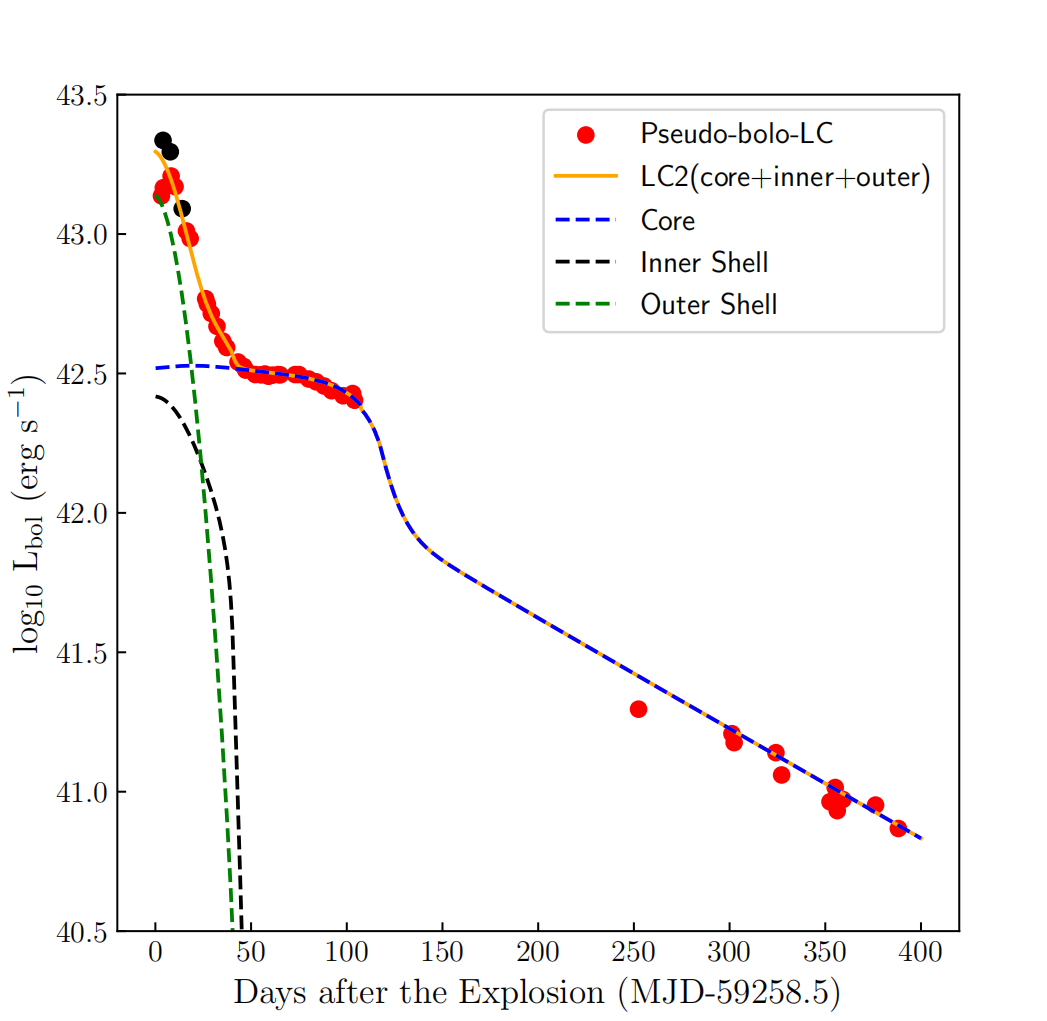A team of researchers, including graduate student ZHAO Zeyi and Researcher ZHANG Jujia from the Yunnan Observatories of the Chinese Academy of Sciences, along with their collaborators, have recently published their research findings titled "SN 2021dbg: A Luminous Type IIP-IIL Supernova Exploding from a Massive Star with a Layered Shell" in The Astrophysical Journal. The research has revealed the unique properties of Type II Supernova SN2021dbg and its potential connection to the layered structure of the hydrogen shell in red supergiants, providing new insights into the formation of Type IIP and IIL supernovae.
Through in-depth analysis, the researchers found that SN2021dbg exhibits a luminosity far exceeding most Type II supernovae. Addtionally, its light curve evolution combines features of both Type IIP and IIL supernovae, making it a rare transitional event among Type II supernovae. Further observations and spectral analysis revealed that the high luminosity is primarily attributed to two factors: the production of more radioactive 56Ni during the explosion than in typical Type II supernovae, and the interaction between the ejecta and the surrounding circumstellar matter during the initial stages of the outburst.
Further analysis indicated that the progenitor star of SN 2021dbg was likely a red supergiant weighing in at an estimated 20 solar masses and with a radius of approximately 1200 solar radii. This red supergiant still retained a thick hydrogen shell prior to the explosion, with a region inside characterized by a steep drop in matter density and temperature, forming a unique layered structure.
The researchers speculated that this layering of the hydrogen shell may be related to the late-stage pulsational activity and enhanced mass loss in massive stars. This structure is responsible for SN 2021dbg’s mixed characteristics of both Type IIP and IIL supernovae, positioning it as a critical transitional event connecting these two types of supernovae.
According to the research team's analysis, if the late-stage pulsational activity and mass loss in red supergiants are less intense than those observed in the progenitor of SN 2021dbg, and fail to form a distinct layered structure in the hydrogen shell, the resulting explosion will manifest as a Type IIP supernova. Conversely, if these activities are more intense, causing the layered structure of the hydrogen shell to destabilize and the outer shell to be rapidly lost, the explosion will exhibit characteristics typical of a Type IIL supernova.
This research not only provides a new perspective on understanding the formation mechanisms of Type IIP and IIL supernovae but also offers important clues for exploring mass loss and pulsational activity during the late evolution of massive stars. With the discovery and study of more supernovae similar to SN2021dbg in the future, researchers anticipate further unraveling the physical origins of the observational diversity among Type II supernovae.

Figure 1: Fitting of the quasi-bolometric light curve of SN 2021dbg using the LC2 model with a double-shell structure. Image by ZHAO.
Contact:
ZHAO Zeyi
Yunnan Observatories, CAS
E-mail: zhaozeyi@ynao.ac.cn